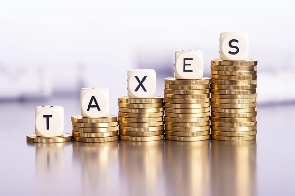In 2018, the Ministry of Finance in collaboration with financial sector regulators and other key stakeholders developed a National Financial Inclusion and Development Strategy (NFIDS) to address the fundamental barriers preventing the underserved population from accessing financial products and services that would enable them to generate income, build assets, manage financial risks and become economically empowered. The Government of Ghana seeks to reduce economic vulnerability and income inequality through the development of a broad financial inclusion policy.
The NFIDS is a strategy that provides a roadmap of reforms and innovation in the financial ecosystem to address financial exclusion and support broader development of the financial sector. Ultimately, the strategy seeks to increase financial inclusion from 58 percent of Ghana’s adult population to 85 percent by 2023.
But during the presentation of the 2021 budget to parliament, the government indicated that it is considering rolling out creative revenue mobilization measures to fund its projects. For that matter, the government needs creative revenue mobilization measures that will enable it to roll out its fiscal policies. This has further culminated in the government’s effort at rolling out new taxes to increase revenue mobilization. Nonetheless, it can be said that although Ghana’s tax rates are high the nation is not accruing enough revenue because of the low efforts in revenue mobilisation.
Government must ensure efficient means of revenue mobilisation rather than continuously rolling out new taxes which will end up confronting the existing challenge of inefficiency in mobilising the revenue. Domestic revenue mobilisation (DRM) is the generation of government revenue from domestic resources via tax or non-tax sources. Improving DRM in developing countries is a crucial factor in sustainable development. According to research conducted by the Ghana Anti-Corruption Coalition (GACC) in 2020, about 1.5 million out of the six million eligible Ghanaian taxpayers pay tax; making Ghana have one of the lowest tax to Gross Domestic Product (GDP) ratios in Africa.
Ghana has a lot to do before meeting the sub-Saharan average target of 17 percent – which is above the nation’s 13 percent mark as its various governments have over the years tried to upscale the country’s challenge of collecting less tax and relying mostly on external help – the International Monetary Fund, World Bank, bonds and others. That notwithstanding, we should note that the increasing tax impositions will not accrue to the achievement of the NFIDS due to the inefficiencies in revenue collection – and as well, the goal of reducing the financial vulnerability of low-income people may not be met if more regressive taxes are imposed.
Review of new taxes
In line with Articles 108 and 174 of the 1992 constitution, the Finance Minister brought before parliament new taxes which include the Excise Duty Amendment Bill 2022, the Growth and Sustainability Levy Bill, 2022, the Ghana Revenue Authority Bill 2022, and the Income Tax Amendment bill 2022.
According to the government, the new tax bills presented to parliament seek to rake in about GH¢4billion annually as part of domestic revenue mobilisation. The bills are also crucial in aiding the government’s quest to facilitate Board Approval for the US$ 3 billion International Monetary Fund (IMF) Programme staff-level agreement.
This proposal is not innovative since we have not seen the target revenue for E-levy being realized. So, what can government do differently in anticipation of achieving the needed revenue with these new taxes?
I. Excise Duty Amendment Act
It is imperative for Ghanaians to know the impact the proposed measure will have on the cost of production, distribution, and sale of products. The rate of increments in the Excise Duty (Amendment) Act 2022 will definitely hurt businesses.
For instance, the proposed 20 percent rate on mineral water from the previous 17.5 percent will lead to an increase in the cost of production that companies will ultimately pass on to consumers, which could lead to a decline in sales. In addition to that, there may be business lay-offs due to reduced production. Also, the proposed imposition of excise duty at 20 percent of the ex-factory price – ‘sugar tax’ on sweetened beverages – in addition to the already existing 17.5 percent (to be increased to 20 percent per the amendment) on non-alcoholic beverages will inversely impact the business of companies operating in that sector. This will lead to an astronomical increase in the cost of production, especially for companies producing both mineral water and sweetened beverages.
II. Growth and Sustainability Levy
The Growth and Sustainability Levy Bill 2022 seeks to raise revenue for the growth and fiscal sustainability of the economy. According to the memorandum accompanying the bill, the Coronavirus Disease (COVID-19) pandemic led to a significant reduction in revenues and increased expenditure enormously. This has been compounded by the Russian-Ukraine war resulting in unprecedented global crises, depreciation in currencies, and impacted living conditions and inflation levels.
This tax is to be imposed on profit before tax of companies and institutions, and on production for 2023, 2024, and 2025 years of assessment under three categories: mining, upstream oil and gas companies specified, and others.
Category A – Rate of Levy: 5 percent on Profit before tax
Banks
Non-Bank Financial Institutions
Insurance Companies
Telecommunications Companies are liable to collect and pay the Communications Service Tax under the Communications Service Tax Act, 2008 (Act 754).
Breweries
Inspection and Valuation Companies
Companies providing mining Support Services
Bulk Oil Distributors
Oil Marketing Companies
Communication Tower Operators
Companies providing upstream Petroleum Services
Companies and Institutions registered by the Securities and Exchange Commission
Specialised Deposit-Taking Institutions
Electronic Money Issuers
Shipping lines, maritime and airport terminals
Category B – Rate of Levy: 1 percent of gross production
Mining Companies and Upstream Oil and Gas Companies
Category C – Rate of Levy: 2.5 percent of Profit before tax
All other entities not falling within Category A or Category B
A tax on profit before tax – which levy is not a deductible expense – is a disguised increase in tax rates and worse in impact, as it is not even based on actual profit and production. The Growth and Sustainability Levy is a re-branding of the National Fiscal Stabilisation Levy which hitherto was limited to selected banks, excluding rural and community banks. And this is another window seeking to collapse more banks, and other entities in mining and upstream oil and gas companies.
III. Tax on sports betting
Government has also introduced a new tax for betting, games of chance, and lottery. Tax will be 10 percent of all winnings. Betting companies will also have a 20 percent withholding tax on all revenue. According to the government, it introduced this new tax because it is estimated that Ghana loses over GH¢300million annually in revenue due to leakages in the sector. This tax is added to the list of nuisance taxes in Ghana which seek to reduce participation in the betting companies.
This is because the tax on online betting is a ‘sin tax’ or regressive tax imposed to discourage people somewhat from engaging in the activity. Moreover, it will be difficult for the government to extract taxes on online betting in this day and age unless it does cyber-monitoring of the online betting companies and blocks their Uniform Resource Locator (URL). Even with that, betting companies can use Virtual Private Networks (VPNs).
On top of that, online betting companies rely heavily on a cashless system of transactions.
So, if the Mobile Network Operators (MNOs) do not integrate these online betting companies, there will surely be low revenue collection. In the end, it will look like killing a fly with a sledgehammer. It will be both unnecessary and impractical.
How do taxes affect businesses in the long run?
Primarily through the supply side, high marginal tax rates can discourage work, savings, investment, and innovation, while specific tax preferences can affect the allocation of economic resources. But tax cuts can also slow long-run economic growth by increasing deficits. The long-run effects of tax policies thus depend not only on their incentive effects but also their deficit effects.
Economic activity reflects a balance between what people, businesses, and governments want to buy and what they want to sell. In the short run, demand factors loom large. In the long run, though, supply plays the primary role in determining economic potential. The productive capacity, in the long run, depends also on government intervention through tax incentives and budget allocations.
I. Tax Incentives
By influencing incentives, taxes can affect both supply and demand factors. Reducing marginal tax rates on wages and salaries, for example, can induce people to work more. Expanding the earned income tax credit can bring more low-skilled workers into the labour force. Lower marginal tax rates on the returns to assets (such as interest, dividends, and capital gains) can encourage saving. Reducing marginal tax rates on business income can cause some companies to invest domestically rather than abroad. Tax breaks for research can encourage the creation of new ideas that spill over to help the broader economy. And so on.
Note, however, that tax reductions can also have negative supply effects. If a cut increases workers’ after-tax income, some may choose to work less and take more leisure. This ‘income effect’ pushes against the ‘substitution effect’, in which lower tax rates at the margin increase the financial reward of working.
Although government did not ask for tax incentives in the mid-year budget, that notwithstanding the country has lost GH₵10billion in tax exemption incentives over the last two years. In correlation with the problem of high expenditure and astronomic debt (both external and domestic) is the firm need of government to mobilise more funds through Domestic Revenue Mobilisation (DRM) by increasing existing taxes and creating new ones in this year’s budget.
II. Budget Effects
Tax cuts can also slow long-run economic growth by increasing budget deficits. When the economy is operating near potential, government borrowing is financed by diverting some capital that would have gone into private investment or by borrowing from foreign investors. Government borrowing thus either crowds out private investment, reducing future productive capacity relative to what it could have been; or reduces how much of the future income from that investment goes to Ghanaian residents. Either way, deficits can reduce future well-being.
The long-run effects of tax policies thus depend not only on their incentive effects but also on their budgetary effects. If parliament reduces marginal tax rates on individual incomes, for example, the long-run effects could be either positive or negative depending on whether the resulting impacts on savings and investment outweigh the potential drag from increased deficits.
Business News of Saturday, 15 April 2023
Source: Michael Nlasia, Contributor

















